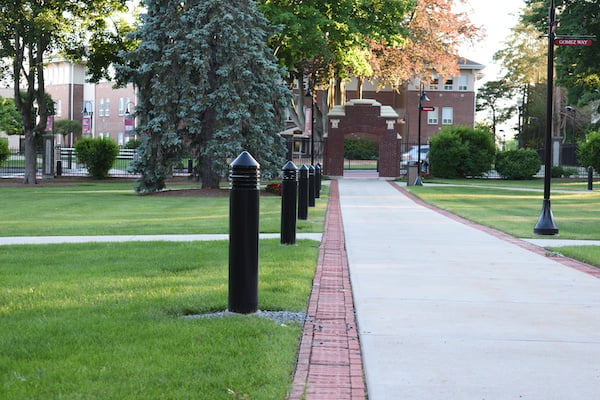Published on
Student Disengagement in Higher Education

While institutions of higher education continue to recover from the COVID-19 pandemic, we in this profession continue to explore the ramifications of a global shut down, a shift to a predominantly digital environment and the need to wave hello from a six-foot distance.
As new revelations continue to unfold, one area of discovery is student engagement—or rather, student disengagement. Before continuing further, it is important that we distinguish between student engagement and student involvement. Involvement is defined as the act of doing something such as taking part in a campus activity, which may be an event, program, club, organization, athletic team, Greek life, campus service, etc. Engagement is defined as taking involvement one step further and being part of the planning process for activities by helping to lead an organization, fostering interpersonal connections within a group or providing space for others to become involved. While we attribute much of the disengagement we now see on college and university campuses to the pandemic, we must remember that it alone is not the primary source of this change, but rather the global environment our students have experienced.
Over the past decade, we have seen a change in our college-aged students shifting from millennials to Gen Z. Gen Z is generally accepted as those born in the late 1990s up until 2010. These individuals have grown up in a post-9/11 world, developed a sense of awareness during a global recession and seen extreme political and social turmoil worldwide. If we take a step back further, these students’ family units are made up of Gen X or millennials, who are known as fixers, striving for a higher quality of life than was provided to them. These motivations, combined with the global affairs that have existed for most Gen X and millennial adulthood, yield the behavioral and social patterns of our Gen Z students. Students have grown up in and been taught that the world is a dangerous place and to let those who are older pave the way to eliminate barriers and give them the greatest chance of success possible.
This exact mindset and taught behavior are a part of what we are now experiencing in higher education. This is not to place blame on any one demographic, but rather to identify social, cultural and global factors that have come to influence our current student population. These students have been conditioned to practice caution in their daily lives, find something that interests them, hold on to it and seek protection from others when times are tough rather than exercising problem-solving skills or taking initiative—someone else will troubleshoot.
In practice, this displays on college campuses as students who are less involved in campus groups (finding one or two groups instead of the older thought of overcommitment), less inclined to take on leadership roles, seeking intentional and fewer connections and requiring all details before making any type of commitment, which they will take time to seriously reflect and consider before finalizing. With all these factors and considerations now made, this begs the question: “Where do we go from here?”
For us to promote student success and student engagement, we need to become comfortable with the following:
The former days of student engagement are no more for the foreseeable future
If we continue to fight and reference “the good old days” of student engagement as a model for how our students should be, it will only continue to expand the gap between what we hope for our students and reality. Reminiscing on the old days is not a message our students want to hear as it’s not an interest to them. Instead, we need to think and discuss what can be, not what is or was.
Embracing the unknown future of student engagement
The future of student engagement is one we previously didn’t think could exist. We will continue to learn as we go, but we need to embrace the period of confusion and let go of what we currently know. Once we can feel okay with this and work toward it, we will begin to see students prosper in their campus engagement, per the refreshed campus culture.
Developing students’ confidence in taking a greater role on campus instead of asking why they are choosing not to
Students don’t feel confident taking on leadership roles, nor do they feel the need to. Instead of asking why they don’t want to, we need to focus on developing them to feel the need to take action and be ready to do so.
Supporting small and specific social connections instead of large overarching ones
When students can find connection in small groups, it will lead them to feel comfortable exploring other interests knowing they have somewhere they belong and feel valued. While this may be a bit homogenized based on their groups, it is a step toward creating a more diverse portfolio of connections and interests.
Explaining the “why” behind doing something is just as, if not more, important than the process of getting there
Students want to know the full details of anything before even considering if it is worth their time and energy. However, they also want to know why something should matter to them. Instead of giving them the why, help them understand the why through process.
While how student engagement will look is yet to be determined, there are a few key pieces that we can expect to see with the factors we know now.
- A greater number of organizations that have a narrower focus or meet specific student needs.
- Students adopting a quality vs quantity approach to their involvement and their engagement.
- Students who are more committed if they feel it is worth their effort and energy.
- An increase in student apathy, but it will be more a question of commitment and assessment than lack of caring.
- Less exploratory students unless it is something they have come to know and enjoy.
As we look to the future, what is perceived now as student disengagement will shift to a new version of student engagement—something unlike anything we currently know. As long as we, as a profession, continue to recognize and embrace the new normal, we will be able see a new dawn of student engagement that will be stronger than anything we have known. If we fail to recognize it and continue challenging the path we are on, we will see students fully disengage.
Author Perspective: Administrator


